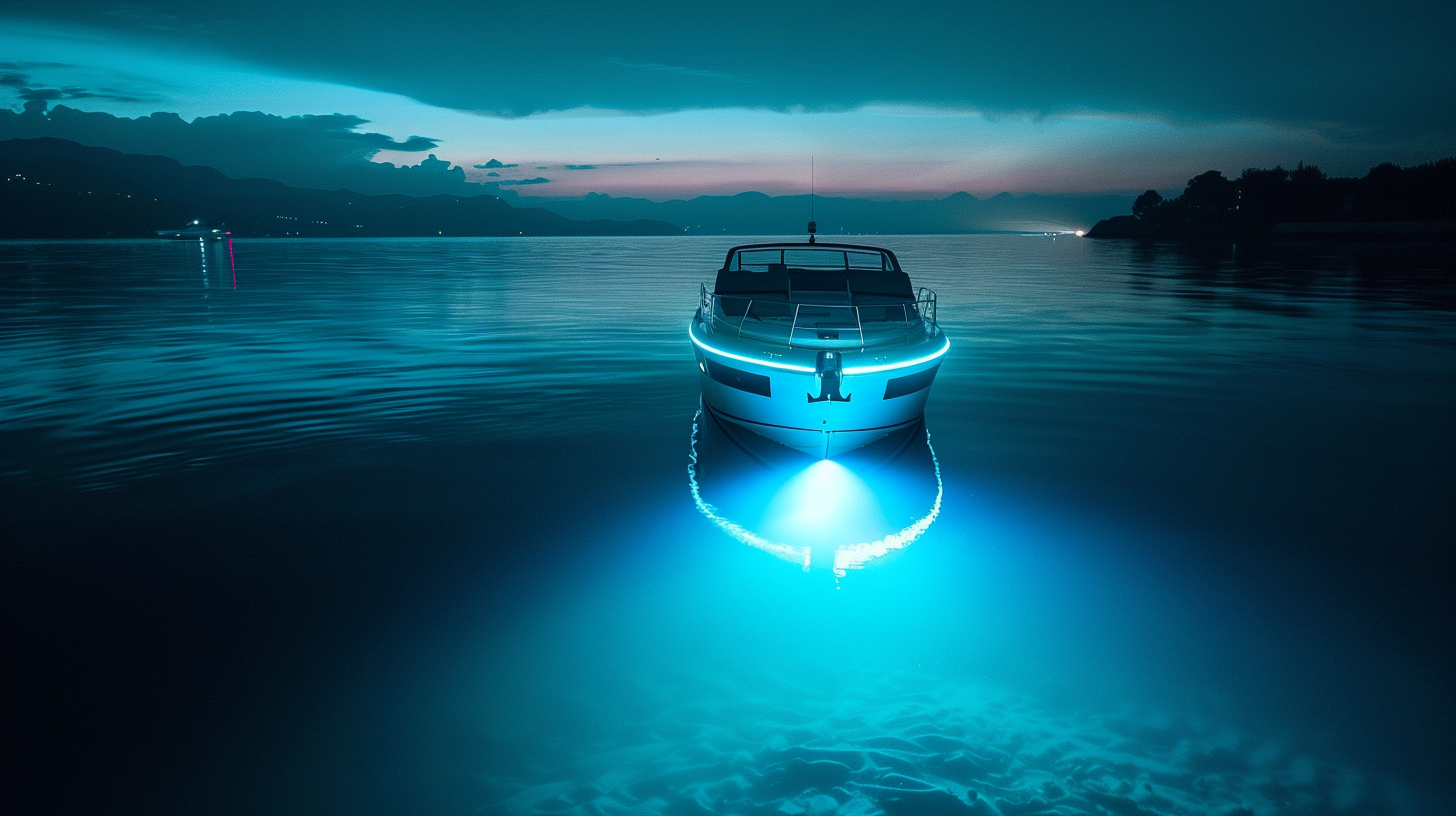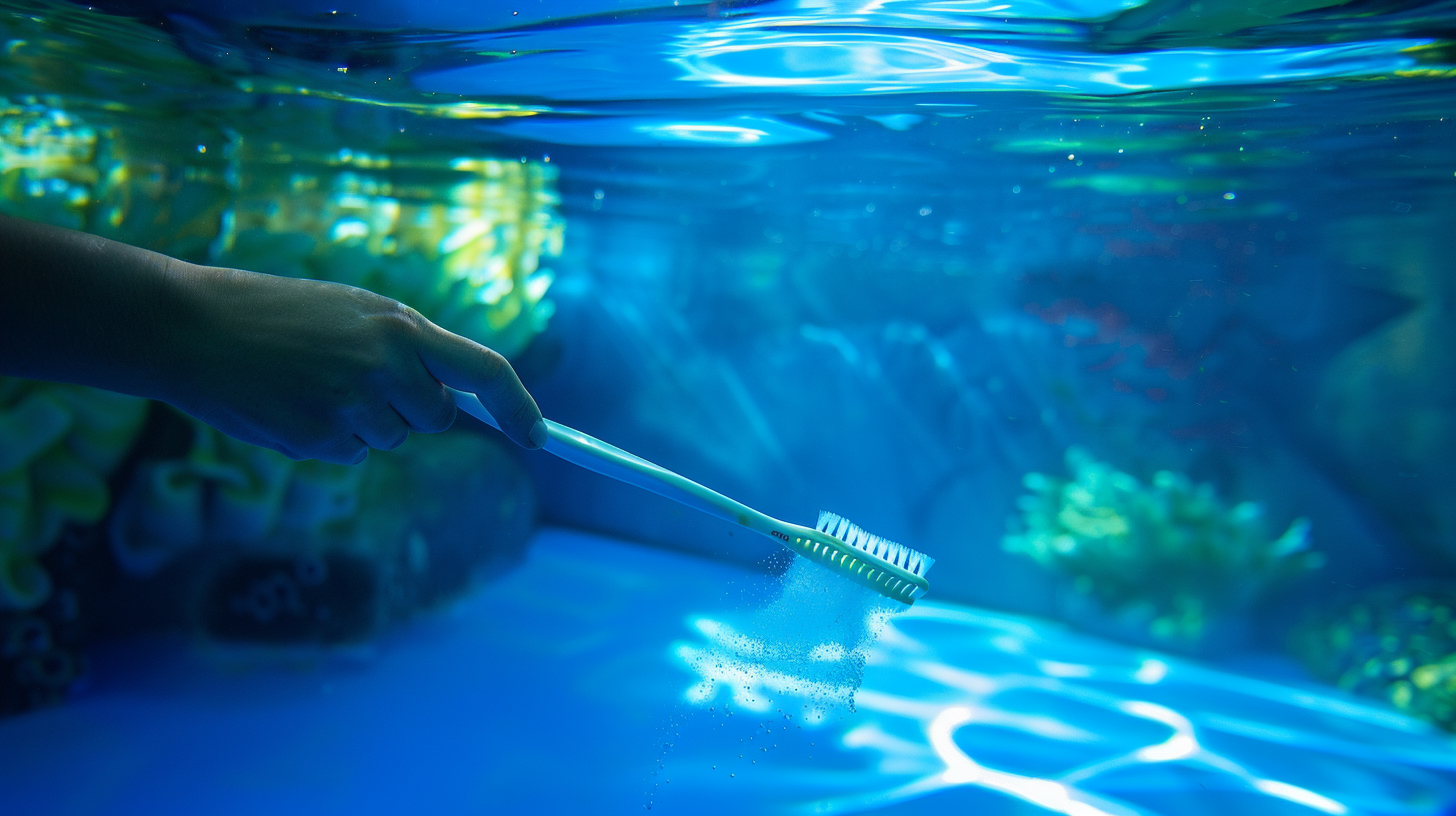How underwater boat lights enhance safety on the water
Understanding the importance of visibility when it comes to boating safety cannot be stressed enough. Underwater boat lights play a crucial role in enhancing this visibility, especially during nighttime or in murky waters. These lights not only make your boat more visible to other vessels but also illuminate the surrounding water, helping you spot potential hazards like floating debris or unexpected obstacles. Furthermore, underwater lights can assist in safer docking and launching, making the entire boating experience much more secure.
The enhanced safety features provided by underwater boat lights are indispensable for night-time adventures. They create a well-lit environment that ensures you can navigate through the water with confidence. Whether you are an experienced sailor or a novice, the added visibility provided by these lights greatly reduces the risk of accidents. They are an essential upgrade for anyone looking to improve their on-water safety measures.
Besides their practical benefits, underwater lights also add an aesthetic appeal to your vessel. Imagine the enchanting glow emitting from beneath your boat, creating a mesmerizing visual effect on the water. This not only makes for a more enjoyable boating experience but can also be a delightful feature for guests on board. In essence, underwater boat lights marry functionality with visual allure, making them an asset for both safety and enjoyment on the water.
Understanding the importance of visibility
Considering the various kinds of underwater boat lights on the market is vital for achieving the best possible visibility and safety during your water adventures. When selecting underwater lights, you will encounter options such as LED lights, halogen lights, and HID (High-Intensity Discharge) lights. Each type offers unique advantages, making it essential to choose the one that best suits your needs.
LED lights are a popular choice due to their longevity and energy efficiency. These lights provide a bright and clear illumination, enhancing visibility and ultimately helping in avoiding potential hazards in the water. Another advantage of LED lights is their minimal heat output, making them safer for long-term use compared to other lighting options.
Halogen lights, on the other hand, produce a warm and intense light, which can be beneficial for certain underwater activities. However, they tend to consume more energy and generate more heat than LED lights. Despite these drawbacks, halogen lights remain a favored choice for many boating enthusiasts who prefer their specific illumination characteristics.
For those seeking even more powerful illumination, HID lights offer an impressive light output with a relatively lower energy consumption compared to halogen lights. These lights are particularly effective for professional and deep-sea applications, where intense and far-reaching light is crucial. However, it's worth noting that HID lights can be more expensive and may require more complex installation processes.
Ultimately, the choice of underwater boat lights depends on your specific requirements and preferences. Investing in the right type of lights can significantly enhance your boating experience, ensuring maximum visibility and safety, thus allowing you to enjoy your time on the water with peace of mind.
Types of underwater boat lights
Proper installation of underwater boat lights is key to ensuring both optimal performance and safety. To begin with, it's essential to choose a suitable location on your boat where the lights will be most effective. Typically, the transom or the hull are prime spots for light installation as they offer the best coverage and visibility. Make sure to avoid placing the lights near any essential sensors or equipment that might be affected by the electromagnetic interference produced by the lights.
When it comes to the actual installation process, start by safely securing the boat on dry land or a lift to avoid any mishaps. Drill the necessary holes as per the manufacturer's guidelines, ensuring they are positioned well above the waterline to prevent leakage. Use waterproof sealant around the fittings to create a watertight seal and protect against water infiltration, which could lead to electrical short circuits or corrosion over time.
Next, connect the lights to a dedicated power source that is capable of handling the electrical load. It's advisable to install an inline fuse and a marine-grade switch to provide an added layer of safety and convenience. Using marine-grade wires and connectors can help ensure a secure and lasting connection, resistant to the harsh marine environment. Additionally, opt for a corrosion-resistant mounting bracket or hardware to further prolong the life of your underwater lights.
Testing your newly installed underwater boat lights is crucial before you take your boat back into the water. Check for any potential issues such as flickering or overheating, and ensure the lights illuminate evenly. Regularly inspecting the lights post-installation can help spot and resolve potential problems early, ensuring uninterrupted performance and boating safety.
Installation tips for optimal performance
Just as with any other piece of equipment on your boat, regular maintenance and care of underwater lights are vital to ensure their longevity and optimal performance. Begin by inspecting the lights frequently for any signs of wear and tear, such as cracks, water ingress, or corroded components. Addressing minor issues promptly can prevent them from escalating into more significant problems that may compromise your safety on the water.
Cleaning the lenses of your underwater lights is an essential part of maintenance. Marine growth such as algae, barnacles, and calcium deposits can accumulate on the lenses over time, reducing their brightness and effectiveness. Use a soft-bristle brush and a mild cleaning solution designed for marine environments to gently scrub away any buildup. Avoid harsh chemicals or abrasive materials, as these can scratch the lenses and degrade the light output.
It's also important to check the electrical connections periodically. Ensure that all wires and connectors remain secure and free of corrosion. Saltwater is particularly corrosive, so applying an anti-corrosion spray on the connections can provide additional protection. For maximum reliability, use dielectric grease on the contacts to prevent oxidation.
If your underwater lights come with replaceable bulbs, make sure to use the recommended type and wattage as specified by the manufacturer when replacements are needed. Incorrect bulbs can lead to overheating or electrical malfunctions. Additionally, regularly check the underwater light’s gaskets and seals to ensure they are intact and providing a proper seal; replace them if they show signs of cracking or wear.
Storing your boat correctly during off-season periods can also contribute to the longevity of your underwater lights. If possible, remove the lights and store them in a dry, cool place to protect them from prolonged exposure to the elements. Covering your boat or storing it under a shelter can further protect the lights and other equipment from environmental damage.
Lastly, consider conducting an annual professional inspection of your underwater lighting system. A qualified marine electrician can diagnose and address any underlying issues that may not be immediately apparent, ensuring that your underwater lights remain in top condition and continue to contribute to your boating safety and visibility.
Maintenance and care procedures
Nighttime navigation poses unique challenges that can test the skills of even the most experienced boaters. This is where underwater boat lights truly shine, enhancing nighttime visibility and safety for all types of vessels. By providing a well-lit pathway, these lights enable you to navigate through dark waters with greater precision and assurance. Whether you're sailing in coastal areas, exploring secluded bays, or docking at a poorly lit marina, underwater lights help you see the water's surface and any nearby obstacles clearly.
One of the most critical aspects of using underwater lights during nighttime navigation is their ability to illuminate potential hazards that may be lurking below the waterline. These could be anything from submerged rocks and sandbars to floating debris and marine life. By casting a bright and wide light beam into the water, underwater lights enhance your situational awareness, allowing you to spot and avoid these dangers, thereby significantly reducing the risk of accidents.
Moreover, underwater boat lights improve communication and visibility with other vessels. Boating in low-light conditions can lead to misjudgments and collisions if other boaters are unable to clearly see your boat's position and movements. Properly installed and functioning underwater lights make your vessel more visible to others, signaling your presence and intentions on the water. This added layer of visibility is crucial for preventing nighttime boating accidents and ensuring a safe passage for everyone.
In addition to enhancing safety, underwater lights can also aid in specific nighttime activities such as fishing or diving. The illumination they provide can attract fish, making it easier to engage in night fishing, while also providing ample light for divers to explore beneath the water's surface safely. This extra functionality makes them a versatile tool for various nighttime maritime activities, adding both practical benefits and an element of adventure to your boating experience.
For those who take pride in the aesthetic appeal of their vessels, underwater lights offer an opportunity to create a dazzling visual effect that stands out in the dark. The vibrant glow emanating from beneath the hull not only illuminates the surrounding water but also creates an enchanting ambiance that can be enjoyed by passengers and onlookers alike. This blend of utility and beauty makes underwater boat lights an attractive upgrade for any boat owner looking to enhance both the looks and the safety of their vessel.
Enhancing nighttime navigation and safety
Understanding the importance of visibility when it comes to boating safety cannot be stressed enough. Underwater boat lights play a crucial role in enhancing this visibility, especially during nighttime or in murky waters. These lights not only make your boat more visible to other vessels but also illuminate the surrounding water, helping you spot potential hazards like floating debris or unexpected obstacles. Furthermore, underwater lights can assist in safer docking and launching, making the entire boating experience much more secure.
The enhanced safety features provided by underwater boat lights are indispensable for night-time adventures. They create a well-lit environment that ensures you can navigate through the water with confidence. Whether you are an experienced sailor or a novice, the added visibility provided by these lights greatly reduces the risk of accidents. They are an essential upgrade for anyone looking to improve their on-water safety measures.
Besides their practical benefits, underwater lights also add an aesthetic appeal to your vessel. Imagine the enchanting glow emitting from beneath your boat, creating a mesmerizing visual effect on the water. This not only makes for a more enjoyable boating experience but can also be a delightful feature for guests on board. In essence, underwater boat lights marry functionality with visual allure, making them an asset for both safety and enjoyment on the water.

